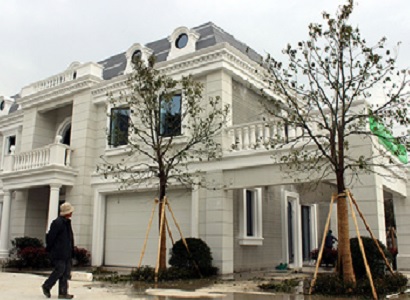Gems of the future
Publish date 25-01-2023
 Chess, writing, glass, the toothbrush, the compass, paper, silk, printing, the kite, the umbrella, porcelain, banknotes, tea come from Asia. , gunpowder, soap, ink, oars, maps and other inventions that helped create the modern world. Since 3200 BC (invention of silk and writing) Asia has been and remains a world champion of innovation.
Chess, writing, glass, the toothbrush, the compass, paper, silk, printing, the kite, the umbrella, porcelain, banknotes, tea come from Asia. , gunpowder, soap, ink, oars, maps and other inventions that helped create the modern world. Since 3200 BC (invention of silk and writing) Asia has been and remains a world champion of innovation.
The epochal challenges of our time
accelerate Asia's strong sympathy for innovation, above all in the field of clean energy, sustainable development, respect for all living systems. Among the hundreds of innovations that appear every month, some have already changed the quality of life of millions of people.
Philippine Solar Lighting Project “light by the liter” produces and distributes solar bottles that light up at night without electricity. Over half a million households have already installed them in 15 countries, replacing old kerosene lamps that are dangerous to health and fire risk.
In Bali living green walls and roofs as in the forest allow you to completely eliminate the use of air conditioning even in large structures such as tourist resorts. It also happens in other parts of Asia,
Through curved walls and natural air flows, internal heating caused by the sun is eliminated. In remote and sparsely populated areas in Myanmar, energy comes from hundreds of small solar and hydroelectric plants that serve only small villages. Long high voltage networks and diesel generators, which have a bad impact on the environment, are eliminated. In Malaysia, millions of electric scooters are used by the police, post office, home deliveries. The innovation eliminates air and noise pollution caused by millions of motorcycles with internal combustion engines. The batteries are recharged with solar panels.
The balconies and facades of Singapore apartment buildings grow the favorite vegetables of those who live there. The pumps for irrigation of vertical gardens, powered by solar panels on the roof, consume as much as a 10-watt light bulb. Some condominiums offer 38 different types of organic vegetables, free of fertilizers and pesticides and sell the excess production to nearby restaurants.
In Indonesia, India, Bangladesh, Thailand and Vietnam, small rooftop farms absorb carbon dioxide from the air to produce highly nutritious blue-green algae, rich in spirulina, an alternative to meat animal much in demand by vegetarians. Thus the production does not need land and captures toxic gases.
In China, the production and sale of houses manufactured with new 3D printers is strong , which can reach up to 4 floors. They cost little, have a low environmental impact and can be manufactured in three days.
Sandro Calvani
NP November 2022







